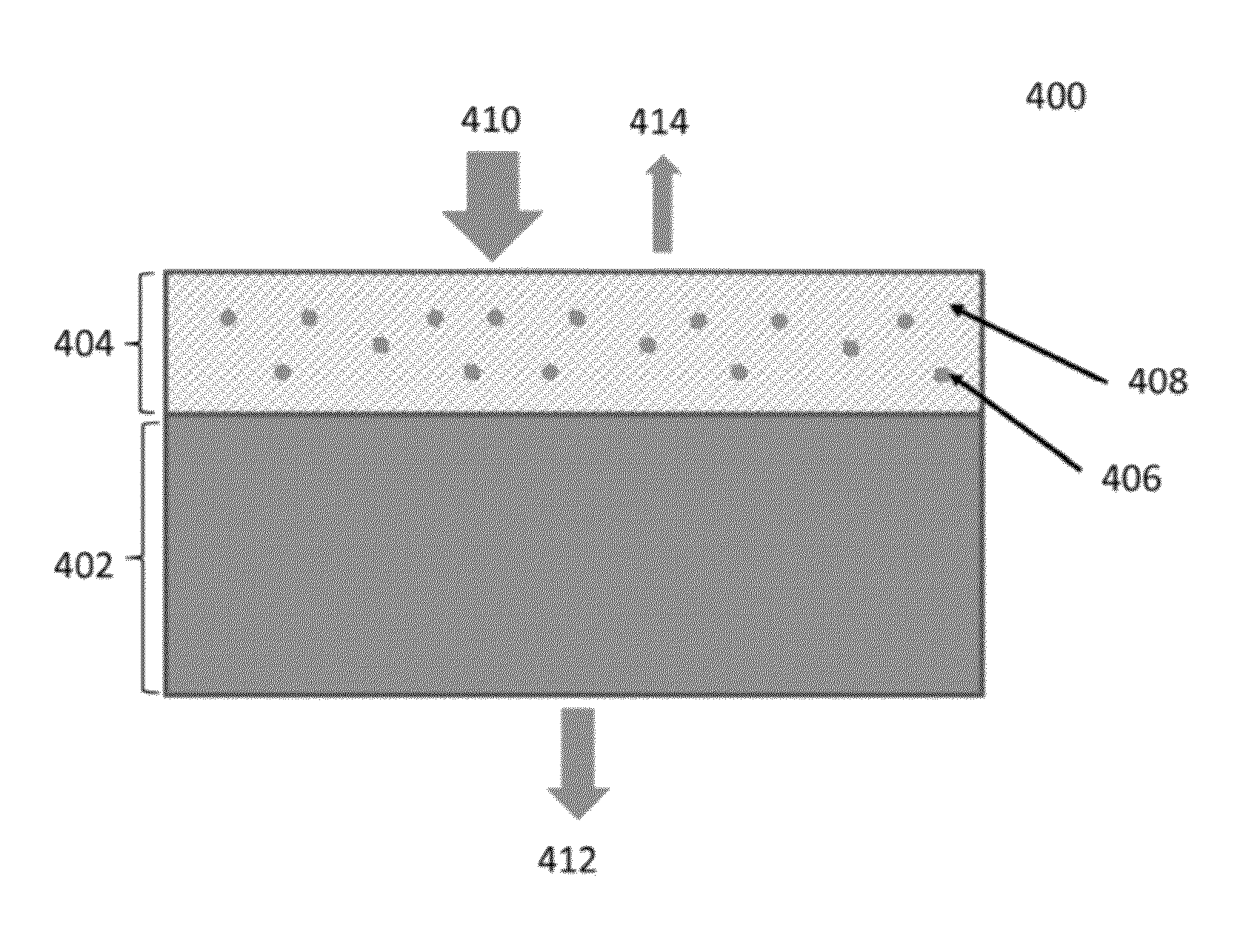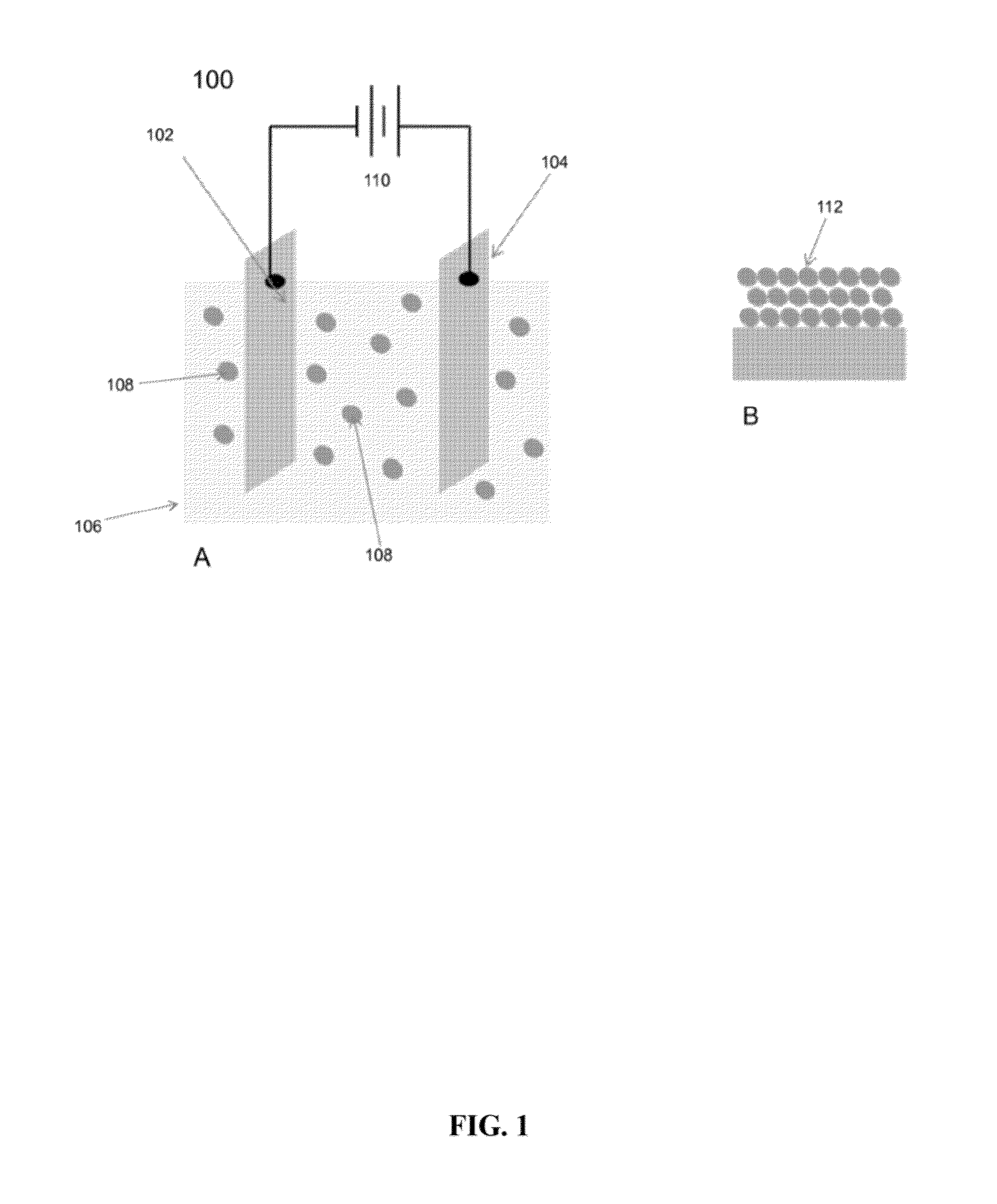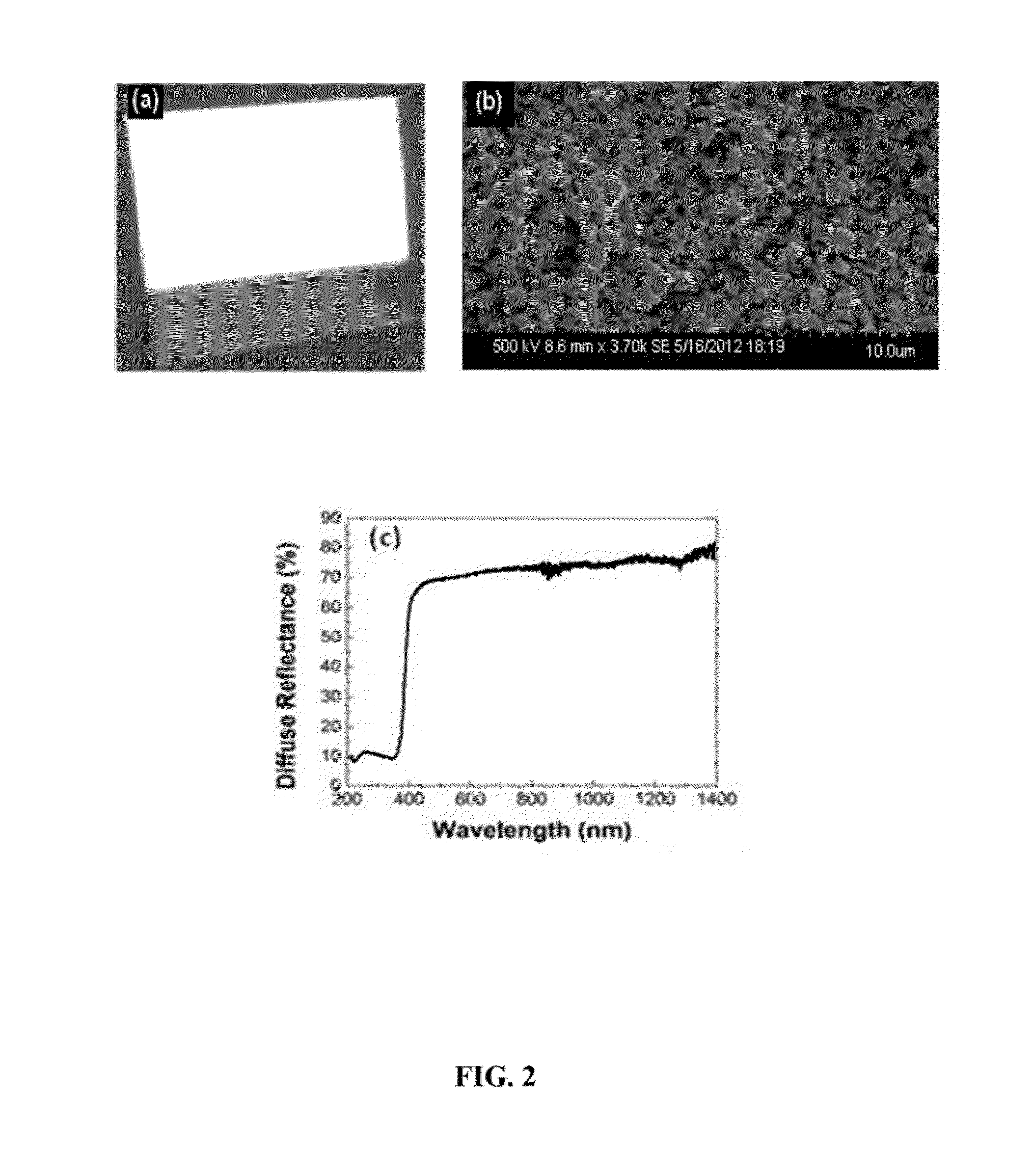Nanoparticle films for use as solar cell back reflectors and other applications
a solar cell and back reflector technology, applied in the field of nanotechnology, can solve the problems of inability to meet the product reliability criteria, thin film si solar cells traditionally have lower efficiencies than wafer-based si counterparts, and the si layer may not be able to sufficiently absorb sunlight, and achieve the effect of low emissivity glass
- Summary
- Abstract
- Description
- Claims
- Application Information
AI Technical Summary
Benefits of technology
Problems solved by technology
Method used
Image
Examples
example 1
BaTiO3 Nanoparticle Films
[0181]BaTiO3 nanoparticles were deposited onto either ITO coated glass substrates, silicon wafer (doped and undoped) substrates, or aluminum substrates using the apparatus shown in FIG. 1. Solutions comprising BaTiO3 nanoparticles (average diameter ˜700 nm) were prepared by adding 7.5 g BaTiO: nanoparticles to 150 mL of Blend A. Prior to electrophoretic deposition, the solutions were sonicated for about 5 to 30 min. Films of BaTiO3 nanoparticles were deposited onto the various substrates via electrophoretic deposition under the following conditions: a direct voltage of 60 V; a distance of 2 to 4 cm between the electrode (either Pt foil, ITO coated glass, or aluminum) and substrate; deposition times of 5 min; and deposition temperature of room temperature. Finally, the nanoparticle films were evaluated using standard techniques. The nanoparticle films were about 20 μm thick and exhibited a surface roughness in the range of from about 100 nm to about 3 μm. The...
example 2
Ag Nanoparticle Films
[0182]Ag nanoparticles were deposited onto ITO coated glass substrates using the apparatus shown in FIG. 1. Solutions comprising Ag nanoparticles (average diameter ˜50-80 nm) were prepared by adding 0.1 g Ag nanoparticles to 100 mL of Blend A. Prior to electrophoretic deposition, the solutions were sonicated for about 20 min. Films of Ag nanoparticles were deposited onto the substrates via electrophoretic deposition under the following conditions: a direct voltage of 60 V; a distance of 2 to 4 cm between the electrode (Pt foil) and substrate; and deposition times of 1 to 5 min. The normalized diffuse reflectance and transmission spectra of the film shown in FIG. 5 revealed that the film transmits visible wavelengths of light and reflects both UV and infrared wavelengths of light. These experimental results confirm that the deposited nanoparticle film is suitable for use as a low emissivity coating for a glass window.
example 3
Si Nanoparticle Films
[0183]Si nanoparticles were deposited onto ITO coated glass substrates using the apparatus shown in FIG. 1. Solutions comprising Si nanoparticles (American Elements, average diameter ˜130 nm) were prepared by adding 0.1 g Si nanoparticles to 40) mL of Blend A. Prior to electrophoretic deposition, the solutions were sonicated for about 20 min. Films of Si nanoparticles were deposited onto the substrates via electrophoretic deposition under the following conditions: a direct voltage of 5 to 60 V; a distance of 2 to 4 cm between the electrode (Pt foil or ITO coated glass) and substrate; and deposition times of 20 s to 6 min.
PUM
| Property | Measurement | Unit |
|---|---|---|
| diameter | aaaaa | aaaaa |
| diameter | aaaaa | aaaaa |
| thickness | aaaaa | aaaaa |
Abstract
Description
Claims
Application Information
 Login to View More
Login to View More - R&D
- Intellectual Property
- Life Sciences
- Materials
- Tech Scout
- Unparalleled Data Quality
- Higher Quality Content
- 60% Fewer Hallucinations
Browse by: Latest US Patents, China's latest patents, Technical Efficacy Thesaurus, Application Domain, Technology Topic, Popular Technical Reports.
© 2025 PatSnap. All rights reserved.Legal|Privacy policy|Modern Slavery Act Transparency Statement|Sitemap|About US| Contact US: help@patsnap.com



